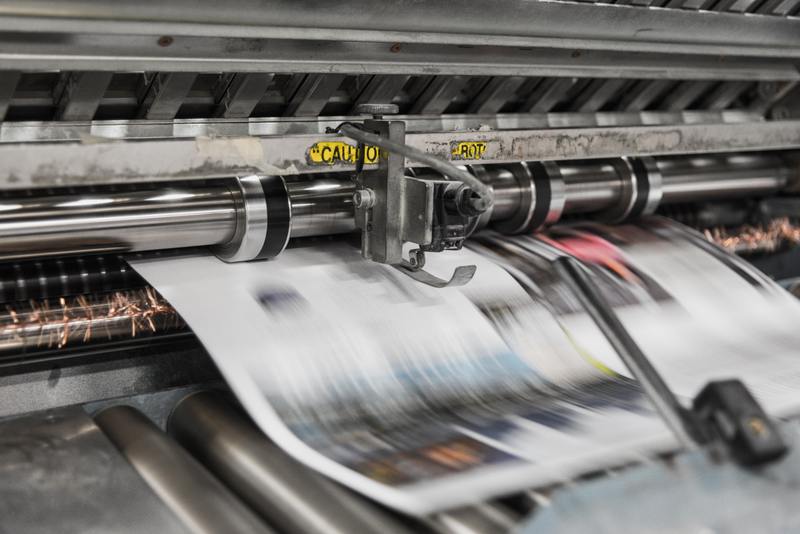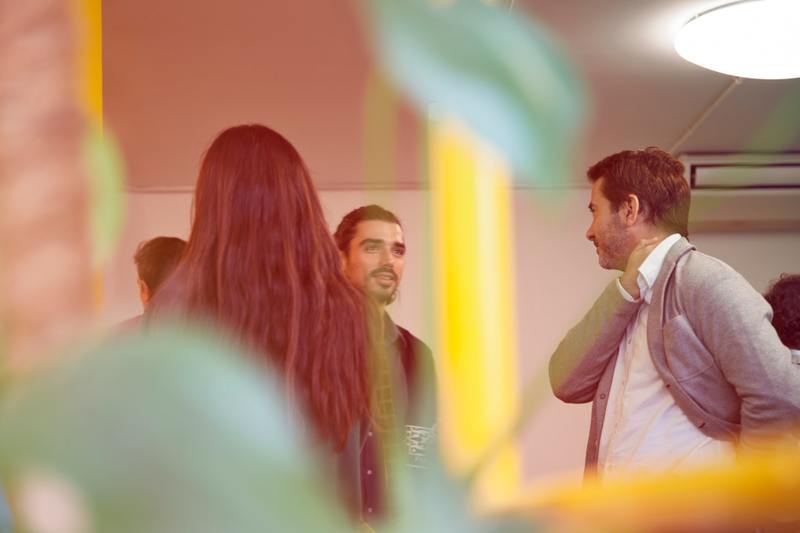Blog
A Music Artist’s Guide to Press Coverage: How to get Featured
30 Jul '2021
If you want your music to be heard you need to get the word out there, here are some ways to get covered in the press.

Appearing in the press is one way to gain exposure. Websites and, to a lesser extent, magazines offer content to dedicated readers who want to find out more about good music and the people who make it. The aim for the press outlet is to generate traffic with interesting articles, usually in order to sell advertising space, monetizing their audience, rather than the content they create.
So how do you end up on the pages? Whether those pages are virtual or made of paper, there’s one key way to get coverage: do something interesting.
The Press-Worthy Artist
Consider the case of sound designer Diego Stocco, who gained press coverage by creating a video of his leaf-blower sound design adventure. Then there’s Bertolt Meyer’s adventures in controlling his synths with his prosthetic arm. Seen from the eyes of a journalist, these stories are interesting to an audience of musicians, and so are more likely to be written about.
Unless it’s about someone who’s famous to begin with, you’ll never see the story “Artist Releases Album” appear on a big music website. Why would it? Your aim for ensuring you get your name out there, so something that only you can do in order to make yourself interesting.

For inspiration, check out the stories as presented on the websites themselves. Here, you can get an idea of the kind of story that’s valuable to a website. You should notice that those “Artist Releases Album” headlines can apply to well-know faces, but smaller artists usually have to do something more to justify their coverage.
Communicating with the Press
Journalists are busy people. When they’re not writing stories for publication or dealing with their bosses being idiots [yes, it’s a universal experience], they’re sorting through new leads and checking out what’s being written by the competition. New potential stories are distributed to writers and editors as press releases, and while we’ll tell you exactly how to send and formulate a press release later on in this article, you’ll need to sure you’ve got the basic steps right first.
With a bit of work, it will be possible to find email addresses and/or web forms for submitting news stories to a website. Different outlets will also use each other to source their stories, so it’s likely that getting successfully reported on a couple of websites will trigger others to write stories too.
Make sure you understand the tone of each website before reaching out. No point in taking your latest chamber chorale announcement over to DJMag.com, or your underground minimal techno tune to MTV.com.
Clara Suess, owner of PR agency Suess Media, writes…
“In such a crowded space, you really need to stand out. Think about what you do which is different to other artists - it could be your sound, your story, your supporters, your look. Then, when pitching to press, take time to really get to know which outlets are the best places to approach - be it a magazine, website, YouTube channel, Spotify Playlist, SoundCloud channel, radio show, etc. See which places and journalists cover music similar to your music and do your research so your pitch is as targeted as possible - so to reference relevant placements for your music and which regular features are covered. Even better, take time to follow and engage with key journalists on social media so they get to know you and are more likely to respond to your emails and listen to your music. I always recommend a targeted one-to-one approach, especially for specific features, rather than blasting out emails to everyone at once. More personalised approaches always secure better results.”
“It takes time but building these relationships is vital in securing good press coverage. It also means that it doesn’t matter where you live, you can still approach key titles and journalists via social media. Then you can build on this by meeting in person with journalists at industry networking events such as IMS Ibiza, Amsterdam Dance Event, Miami WMC, Brighton Music Conference, etc. People will be a lot more open to meeting with you if they know who you are!”

Finally, don’t just send the same information to every single website you can find – personalizing your message and tailoring it to fewer specific websites is far more likely to land you with success than spending the same time blanketing every email address you can find.
Hiring a PR Specialist
It’s possible to involve a professional PR person in your press-seeking endeavours. These companies and individuals will help you tailor your message and come up with a unique plan based on your skills.
While these professionals will cost you money, their experience in knowing what works and their web of contacts can help you come up with a plan and implement it too.
Abi Bunce from Infectious PR writes…
"One of the most important things to consider when creating a press plan is to understand how different media publications work. This includes lead time and having knowledge of what the journalists are looking for. Whether you’re looking to get a review in a print magazine inline with a release day or an online feature a week before to create a buzz, all journalists have different deadlines to make this happen. What’s more, what they look for is also very subjective. Make sure you have a clear understanding of regular feature opportunities, who they are looked after by and what genre that journalist likes. When you know this in detail, a press plan is easier to execute for strong results. As soon as you know a release is on its way, let your publicist know so there is time to secure these ops."
Formulating a Press Release
What do you have to say? What do you want people to know about? What’s different about what you’re doing? If you can answer these questions concisely, you’re ready to write something to send to the press.

At one time, press releases were distributed as faxed or even mailed paper, giving an overview of the story to journalists and writers, so they could retell the story (often with more words and a larger context) to their readers. The press will receive more press releases per day than they can write stories about, so any given release has to make its case well.
Imagine your press release a little like a CV. A hiring manager has to compare ‘applications’ from multiple people and choose the best ones, all within whatever limited period of time they’ve found themselves with. Get to the point, sum up the most important points right at the start, and don’t include more than one page.
Private Music Links
Who doesn’t love feeling special? Members of the press are just like anyone else, and so a secret pre-release download or streaming link will make them more likely to listen. You can host tracks as private on SoundCloud, and still get a secret link to share (you can disable the existing link later if you think it’s fallen into the wrong hands). YouTube videos can be set to Unlisted, meaning that they’re not seen on your channel or shown to any subscribers, but people with a link can still see them.
Creating a Press Pack
A press pack is, basically, a ZIP file with all the assets a person could find useful to write a story about an artist and/or a release. High-quality and web-quality photography, artwork, social media links, and information about the latest release are essential items here.
Other inclusions could be logos, a biography, links to audio files, and even links to videos that can be embedded in an article being written about you. Again, look at the sort of images and embeds that are included in existing stories, and you’ll know the kind of thing that floats the boat of an editor or a writer.
The mission behind a press pack is to easily put words at a writer’s fingertips
In short, the mission behind a press pack is to easily put words at a writer’s fingertips. Imagine that a story’s being written by somebody who knows nothing about your work. After a couple of paragraphs on the new release, where does the writer go next? If there’s information in your press pack about previous releases, awards, labels you’ve released on, and anything else of note, these are more likely to be included to bulk out the article.
Keeping it Current
No one wants to look through a press release and see that “your latest single is one to watch out for in the summer of 2017”; and your photography should also remain as current as possible. If you’re not going to be able to keep your press kit current, another strategy is to simply leave out all references to specific times. Consider how you’d feel if somebody read this in three years’ time.
Going for the Tech Market
There are more producers than ever before – so much so that music tech has become a press market in itself. Even this very blog includes interviews with artists talking about how they make their tunes; and there are plenty of magazines, websites and YouTube channels dedicated to mastering the art of production.

If you’re a skilled producer who has something to teach, and if the technology behind the music you make speaks as loud as the music itself, it’s worth pursuing these press outlets completely separately.
It’s a little easier to find an angle in the music technology space. Here, your selling point could be your studio, as in MusicTech’s Show Off Your Studio series; your technique, as in Future Music’s The Track series; or anything else that you have to contribute to producers just like you.

